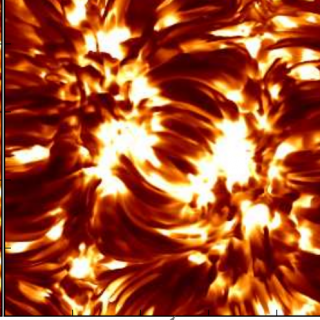Bibcode
López Ariste, A.; Asensio-Ramos, A.; González Fernández, C.
Bibliographical reference
Astronomy and Astrophysics, Volume 527, id.A120
Advertised on:
3
2011
Journal
Citations
13
Refereed citations
10
Description
Aims: We propose and explore a new diagnostic technique based
upon the linear polarization emitted in Hanle-sensitive lines in
disk-integrated stars where a dipolar magnetic field breaks the
rotational symmetry of the resonance scattering polarization
Methods: A star with a simple dipolar field and a 1-0 spectral line were
used to compute polarization amplitudes and angles. Results:
Predicted amplitudes are low but within reach of present instruments Conclusions: A new application of the Hanle effect is proposed and
analyzed as a tool that allows measuring of some of the weakest stellar
magnetic fields.
Related projects

Numerical Simulation of Astrophysical Processes
Numerical simulation through complex computer codes has been a fundamental tool in physics and technology research for decades. The rapid growth of computing capabilities, coupled with significant advances in numerical mathematics, has made this branch of research accessible to medium-sized research centers, bridging the gap between theoretical and
Daniel Elías
Nóbrega Siverio

Magnetism, Polarization and Radiative Transfer in Astrophysics
Magnetic fields pervade all astrophysical plasmas and govern most of the variability in the Universe at intermediate time scales. They are present in stars across the whole Hertzsprung-Russell diagram, in galaxies, and even perhaps in the intergalactic medium. Polarized light provides the most reliable source of information at our disposal for the
Ernest
Alsina Ballester